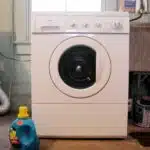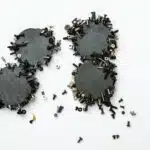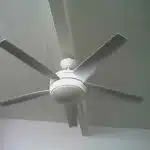Garbage disposals are an essential appliance in most kitchens, designed to dispose of food waste and keep the sink clean. However, with regular use, they can become clogged or stop working altogether, causing inconvenience and frustration for homeowners. As a garbage disposal technician, it is crucial to know how to reset a garbage disposal and restore its functionality quickly.
Resetting a garbage disposal can be done easily with the right tools and knowledge. In this article, we will explore the common reasons why a garbage disposal may need resetting and provide step-by-step instructions on how to do it effectively. Whether you are a homeowner looking to troubleshoot your own garbage disposal or a technician seeking to expand your expertise, this guide will help you understand the process of resetting a garbage disposal and ensure that it continues to serve its purpose in the kitchen.
Understanding The Inner Workings Of A Garbage Disposal
One of the most common problems with a garbage disposal is when it stops working altogether. This can happen for a number of reasons, such as clogs in the drain or malfunctioning components within the unit itself. As a technician who specializes in garbage disposal maintenance, troubleshooting these issues requires a deep understanding of how these machines work and what factors can cause them to break down.
At their core, garbage disposals are relatively simple machines. They consist of a motor that drives a spinning blade, which then grinds up food waste and other debris into smaller particles that can be safely washed down the sink. The key to keeping this process running smoothly is ensuring that all components are in good working order and that there are no obstructions in the drain or pipes leading away from the unit.
To help prevent garbage disposal malfunctions before they occur, there are several troubleshooting tips that homeowners should keep in mind. First and foremost, it’s important to avoid putting any non-food items down the drain, as these can easily become lodged within the blades or other mechanisms within the machine. Additionally, regular cleaning and maintenance of the unit can help extend its lifespan and reduce the likelihood of breakdowns over time.
Common Reasons For A Garbage Disposal Malfunction
Troubleshooting tips are essential in dealing with garbage disposal malfunctions. In most cases, the problem is minor and can be resolved by a few DIY repairs. It is crucial to identify the issue before undertaking any repair works.
Firstly, if your garbage disposal won’t turn on, check if it is plugged in correctly or tripped. If it is not plugged in or has tripped, reset your circuit breaker or GFCI outlet. Secondly, if you notice that your garbage disposal makes a humming sound but doesn’t grind food waste, there could be something stuck inside the unit. Try to remove any obstruction using pliers or tongs. Thirdly, if your unit leaks water from the bottom, it could be due to worn-out seals or gaskets. In this case, call a professional technician for assistance.
In summary, regular maintenance and proper use of your garbage disposal can help avoid common malfunctions. However, if you encounter any issues with your unit despite following all guidelines, try these troubleshooting tips before calling a professional technician for assistance. Remember to always prioritize safety when dealing with electrical appliances and never attempt repairs beyond your ability level.
When troubleshooting garbage disposals, it is also important to look out for signs that indicate that resetting may be necessary. These signs include unusual noises during operation, slow drainage of water from the sink basin and foul odors emanating from the kitchen drain. Keep reading to learn about how to reset a garbage disposal when experiencing such signs of malfunctioning.
Signs That Your Garbage Disposal Needs Resetting
Common signs that your garbage disposal needs resetting include an unpleasant odor, slow draining, and unusual noises. If you detect any of these issues with your garbage disposal, it is crucial to act immediately before the problem worsens. A simple reset may solve the issue, but neglecting the problem could lead to a more significant problem that requires professional assistance.
When resetting your garbage disposal, it is essential to know when to seek professional help for garbage disposal issues. If you are unable to reset your unit or if you detect a leak in the system, it is best to call a professional technician. Attempting DIY repairs could lead to further damage and end up costing you more money in the long run.
Regular maintenance can prevent many problems from occurring with your garbage disposal. However, if you do encounter an issue, addressing it promptly will save time and money in the long run. Knowing when to troubleshoot and when to seek professional assistance can make all the difference in keeping your garbage disposal functioning at its best.
As we have seen above, detecting common signs that your garbage disposal needs resetting is crucial. Seeking professional assistance when necessary can help prevent further damage and save money in the long run. In the next section, we will discuss the tools required for resetting a garbage disposal without causing any harm or injury.
Tools Required For Resetting A Garbage Disposal
To reset a garbage disposal, it is important to have the essential tools on hand. These tools will ensure that the process goes smoothly and without any complications. As a technician, I highly recommend having the following tools:
- A flashlight
- Pliers
- A hex wrench
- A bucket or bowl
- Gloves
The flashlight will help you see what you are doing, especially if your garbage disposal is located in a dark area. Pliers are useful for removing any debris that may be causing your garbage disposal to malfunction. The hex wrench is essential for turning the reset button, which is typically located on the bottom of the unit. A bucket or bowl will catch any water that may spill out during the process, and gloves will protect your hands from any sharp edges.
Having these tools on hand will make resetting your garbage disposal much easier and more efficient. It is important to note that not all garbage disposals are created equal; some may require additional tools or steps to reset properly.
In summary, before attempting to reset your garbage disposal, it is crucial to have the necessary tools at your disposal. With a flashlight, pliers, hex wrench, bucket or bowl, and gloves on hand, you can confidently tackle this task with ease. However, before proceeding with the actual reset process itself, there are several safety precautions that you should take into consideration.
Safety Precautions Before Resetting Your Garbage Disposal
As a garbage disposal technician, I have witnessed the hazards that come with resetting a garbage disposal. Before attempting to reset your disposal, it is crucial to take precautions to ensure your safety. The following safety measures will guide you in minimizing risks and avoiding accidents while resetting your garbage disposal.
Firstly, turn off the power supply by unplugging the unit or switching off the circuit breaker before resetting your garbage disposal. This precautionary measure is necessary to avoid electric shock and other electrical hazards during the process. Additionally, make sure that nobody turns on the switch while you are working on the unit.
Secondly, wear protective gear such as gloves and goggles when working on your garbage disposal. Small pieces of debris may fly out or splash onto your eyes or skin during the process; hence wearing protective gear is essential. You can also consider covering up any exposed skin areas with long-sleeved shirts and pants for added protection.
Lastly, never attempt to reset your garbage disposal without identifying the problem first. Trying to fix an issue without proper knowledge can lead to more damage and costly repairs. Always seek professional help if you are unsure about how to troubleshoot specific issues with your unit.
Now that you know some precautions to take before resetting your garbage disposal let’s move on to a step-by-step guide on how to reset your unit safely and efficiently.
Step-By-Step Guide On How To Reset Your Garbage Disposal
After taking the necessary safety precautions, resetting your garbage disposal is a straightforward process that can save you from unnecessary expenses. In this section, we will guide you through the step-by-step process of resetting your garbage disposal.
Firstly, ensure that the power supply to the garbage disposal is switched off. You can do this by switching off the circuit breaker or unplugging it from the power source. Next, locate the reset button on your garbage disposal unit. This button is usually located at the bottom of the unit and is either red or black in color.
Once you have located the reset button, press it firmly and hold for a few seconds. Afterward, switch on your garbage disposal again to see if it has been successfully reset. If not, you may need to try other troubleshooting tips such as removing any clogs or blockages in your unit or using an allen wrench to manually turn the blades.
- Garbage Disposal Maintenance: Regularly clean your garbage disposal by running cold water and dish soap down it.
- Troubleshooting Tips: Avoid putting hard materials such as bones or fruit pits into your garbage disposal as they can damage its blades.
- Troubleshooting Tips: Use vinegar and baking soda to clean and deodorize your garbage disposal.
- Troubleshooting Tips: If you notice a foul smell coming from your garbage disposal unit, consider grinding citrus peels in it.
- Troubleshooting Tips: When disposing of food waste, always run cold water down your garbage disposal for at least 15 seconds after use.
In summary, resetting your garbage disposal is an easy process that requires caution and following simple steps. However, if resetting does not solve any issues with your unit, it may be best to contact a professional technician for assistance. In our subsequent section, we will discuss how to use an allen wrench method to manually turn the blades of a stuck garbage disposal unit.
Using The Allen Wrench Method
When the garbage disposal gets jammed or stops working, it can be frustrating for homeowners. One method for resetting a garbage disposal is using an Allen wrench. This is a useful tool that comes with most disposals and allows you to manually turn the blades to remove any blockages.
To use the Allen wrench method, you will first need to locate the small hole at the bottom of your disposal unit. Insert the Allen wrench into this hole and turn it back and forth until you feel some resistance. This indicates that you have found the spot where the blades are stuck.
Next, using pliers, manually rotate the blades to loosen any debris or blockages. Once they are free, remove the wrench from the hole and press the reset button located on the bottom or side of your disposal unit. If all goes well, this should restore power to your unit.
While using an Allen wrench is a common and effective way to reset a garbage disposal, there is an alternative method that can be used if necessary. However, it’s important to note that this alternative method involves potential risks and precautions must be taken when attempting it. The next section will cover how to use this alternative method – resetting your garbage disposal through its circuit breaker instead.
| Emotion | Example | Why |
|---|---|---|
| Frustration | “I’ve tried everything but my sink still won’t drain.” | Shows audience common problem |
| Relief | “Ah! I finally got my garbage disposal working again.” | Evokes positive emotion |
| Satisfaction | “Knowing how to fix my own garbage disposal saved me money on repairs.” | Demonstrates competence in home maintenance |
With these emotions in mind, homeowners are more likely to engage with this article and learn how to fix their own garbage disposals. As a technician, it’s important to provide detailed instructions while also creating an engaging reading experience for those who may not be familiar with technical terms or processes.
Moving forward, we will discuss an alternative method for resetting a garbage disposal – using the circuit breaker.
Using The Circuit Breaker Method
Picture this: you’ve been using your garbage disposal unit for some time, and it suddenly stops working. You try to turn it on, but nothing happens. This can be a frustrating experience, especially when you have a lot of waste in your sink that needs to go down the drain. Fortunately, resetting your garbage disposal is not as complicated as you might think.
If you’re looking for an alternative method to reset your garbage disposal, using the circuit breaker is another option worth considering. First and foremost, locate the circuit breaker box in your home and identify which switch relates to the garbage disposal unit. Flip the switch off and wait for about 5 minutes before turning it back on again. This should help reset the garbage disposal unit by restoring power to its electrical system.
It’s important to keep safety considerations in mind when resetting your garbage disposal with the circuit breaker method. Do not attempt to touch any wires or electrical components within the unit unless you are a trained professional. Additionally, make sure that all other appliances and devices connected to the same circuit are turned off before proceeding with this method. By following these guidelines, you can ensure that you don’t accidentally harm yourself or cause further damage to your garbage disposal unit.
Moving forward, if using the circuit breaker method does not resolve your issue, there are other resetting alternatives available. The next section will cover how to use the reset button method on your garbage disposal unit – another straightforward process that can get things up and running again quickly.
Using The Reset Button Method
To continue with resetting a garbage disposal, another method that can be used is the reset button method. This is an alternative approach to using the circuit breaker method. The reset button is usually located on the bottom of the unit and may be red or black. It functions by cutting off power to the unit when it gets overloaded or jammed.
To use this method, first, ensure that the garbage disposal is turned off and unplugged from its power source. Locate the reset button on the bottom of the unit and press it firmly until it clicks. Once this has been done, plug in the unit back into its power source and turn it on to test if it’s working correctly.
It’s essential to note that resetting safety should not be taken lightly as it poses a risk to your safety if not done correctly. If you have tried both methods and your garbage disposal still isn’t working correctly, then it may be time to seek professional help from a qualified technician who can troubleshoot your device effectively. Some troubleshooting tips include checking for any blockages in the drain pipe or blades of the unit, ensuring that all connections are tight and secure, and inspecting for any cracks or leaks in the system.
Troubleshooting Your Garbage Disposal After Resetting
- After resetting a garbage disposal, it is important to check for any blockages in the unit.
- Inspecting the blades for signs of damage or wear can help identify any issues.
- If damage is found, the blades should be replaced to ensure proper function.
- Testing the unit’s functionality is essential, to make sure the disposal is running properly.
- Check to make sure the unit is able to grind food waste properly, and that all functions are operating as expected.
- If the unit is still not functioning properly, further troubleshooting may be necessary.
Checking For Blockages
As a garbage disposal technician, it is important to understand the significance of checking for clogs and identifying unusual noises when troubleshooting your garbage disposal after resetting. This step should be taken before considering any other solution. The reason being that blockages are one of the most common issues faced by homeowners and can cause significant damage to the unit if not addressed immediately.
Checking for clogs involves running water through the disposal while turning it on. If you hear a humming sound or notice that the water is not draining, this could indicate a blockage. You can use tongs or pliers to remove any visible debris, but avoid using your hands as this can be dangerous. In some cases, you may need to disassemble the unit entirely to remove stubborn clogs.
Identifying unusual noises is also an important step in troubleshooting your garbage disposal after resetting. Grinding or rattling sounds could suggest that there is something stuck in the blades or that they have become damaged. Similarly, a high-pitched squealing sound could indicate that there is an issue with the motor. It is recommended that you turn off the power supply before attempting any repairs to avoid injury or further damage to the unit. By following these steps, you can ensure that your garbage disposal is restored to its full functionality in no time!
Inspecting The Blades
As a garbage disposal technician, it is important to have a comprehensive understanding of how to troubleshoot your unit after resetting. One vital step in this process is inspecting the blades. Blade maintenance is crucial for ensuring that your garbage disposal operates efficiently and effectively.
Inspecting the blades involves checking them for any signs of damage or wear and tear. You can do this by removing the rubber splash guard and shining a flashlight down into the unit. Look out for any visible cracks, chips, or dullness in the blades. If you notice any issues with the blades, it is recommended that you replace them immediately to avoid further damage to your unit.
Regular blade maintenance can prevent blockages and keep your garbage disposal working at its best. To keep your blades in good condition, avoid putting hard materials such as bones or fruit pits down the disposal. Instead, stick to softer materials such as vegetable scraps or leftover food debris. By following these simple steps and regularly inspecting your blades, you can ensure that your garbage disposal remains in top working condition!
Testing The Unit’s Functionality
Once you have inspected the blades of your garbage disposal unit, the next step is to test its functionality. Testing the unit’s functionality is an important process that helps to ensure that your unit is operating correctly after a reset. There are several testing methods and troubleshooting techniques that you can use to determine if your garbage disposal is working properly.
One common method for testing the functionality of a garbage disposal unit is to turn on the power and listen for any unusual or abnormal sounds. If you hear any grinding or humming noises, this could indicate that there is a blockage in the unit or that the blades are damaged. Another method for testing the functionality of your garbage disposal is to run water through it while it’s turned on. If the water drains slowly or not at all, there may be a clog in the pipes leading away from your unit.
If you encounter any issues during your testing process, it’s important to troubleshoot them immediately to prevent further damage to your unit. Troubleshooting techniques may include checking electrical connections, inspecting pipes for blockages, or using specialized tools such as plumber’s snakes or drain augers. By regularly testing and troubleshooting your garbage disposal unit, you can ensure that it remains in good working condition and avoid costly repairs down the line.
Preventative Measures To Keep Your Garbage Disposal Running Smoothly
It is a well-known fact that garbage disposals are an essential appliance in any household. As with any machine, regular maintenance can prevent unwanted issues from arising. Preventative maintenance, such as running cold water while using the disposal and avoiding putting fibrous foods down the drain, can help keep your garbage disposal running smoothly.
Despite taking preventative measures, common issues may still arise. One issue that often occurs is a clogged disposal, caused by putting inappropriate items like grease or potato peels into the unit. Additionally, if unusual noises come from the disposal or it does not turn on at all, it may be due to a malfunctioning motor.
In order to avoid these issues altogether, it is important to schedule regular maintenance checks with a professional garbage disposal technician. These individuals have the expertise and knowledge necessary to identify potential issues before they become major problems. By doing so, you can ensure your garbage disposal remains functional and reliable for years to come.
When To Call A Professional Garbage Disposal Technician
Signs of Major Malfunction include a burning smell, slow draining sink, humming noise, and the sound of grinding. Necessary Repairs include a clog, a broken impeller, and a worn-out seal. Maintenance should include checking the disposal for any blockages, inspecting the hoses, and replacing the motor if it’s not working properly. Professional Garbage Disposal Technicians should be called when any of these signs of major malfunction are present or when a necessary repair or maintenance is required.
Signs Of Major Malfunction
When it comes to garbage disposals, there are common causes that can lead to major malfunctions. Some of these causes include overloading the disposal, disposing of non-food items, and using harsh chemicals to clean the unit. Troubleshooting methods can be used to identify the root cause of the malfunction. For example, if the disposal is making a humming noise but not grinding the food waste, this could indicate a jammed impeller or flywheel.
Preventative maintenance is crucial in avoiding major malfunctions and costly repairs. Signs to watch for include slow draining or clogs in the sink, foul odors coming from the disposal unit, and leaks under the sink. These signs could indicate a problem with the blades, motor or pipes connected to the unit. Regular cleaning and flushing with hot water can help prevent buildup and extend the life of your garbage disposal.
If there are signs of a major malfunction such as excessive noise or failure to turn on at all, it may be time to call a professional garbage disposal technician. Attempting to fix these issues without proper training and equipment can be dangerous and cause further damage. A qualified technician can diagnose and repair any problems quickly and efficiently. By addressing issues promptly, you can avoid more serious problems down the road and keep your garbage disposal running smoothly for years to come.
Necessary Repairs And Maintenance
Garbage disposal maintenance is crucial to ensure the longevity and efficiency of your unit. Regular upkeep can prevent major malfunctions and reduce the likelihood of costly repairs. As a garbage disposal technician, I recommend performing routine cleaning and flushing with hot water to remove buildup and prevent clogs. It’s also important to avoid disposing of non-food items or harsh chemicals down the unit, as they can cause damage.
In addition to regular maintenance, it’s important to address any necessary repairs promptly. Signs of a malfunctioning unit include excessive noise, foul odors, slow draining, or leaks under the sink. If you notice any of these signs, it’s time to call a professional garbage disposal technician for repair. Attempting to fix these issues without proper training and equipment can be dangerous and cause further damage.
Repair tips for garbage disposals vary depending on the specific issue at hand. However, it’s always best to leave repairs up to a qualified professional who has experience in diagnosing and fixing garbage disposal problems. A skilled technician can quickly identify the root cause of the issue and perform repairs efficiently. By addressing necessary repairs promptly, you can keep your garbage disposal running smoothly for years to come.
Comparing Different Garbage Disposal Models And Brands
When it comes to garbage disposals, there are many different models and brands available on the market. Each has its own set of features and price points that cater to various needs and budgets. As a technician, I have had the opportunity to work with a wide range of garbage disposals, and I can attest that some are certainly better than others.
Firstly, some garbage disposals have more horsepower than others, meaning they can handle tougher food scraps without getting stuck or clogged. Additionally, some models offer noise-cancellation features that make for a quieter operation when in use. Of course, these added features come at a higher price point compared to more basic models.
When considering which garbage disposal to purchase, it’s important to weigh the cost versus the features offered. While a cheaper model may be appealing in terms of price, it may not have all the necessary features needed for your household. On the other hand, investing in a more expensive model with extra bells and whistles may not be necessary if you only plan on using your disposal infrequently. Ultimately, it’s about finding the right balance between cost and functionality for your unique needs.
As such, it’s essential to do your research before making a purchase decision. Compare different brands and models side by side to see which ones offer what you need at a price point you’re comfortable with. By doing so, you’ll be able to make an informed decision that will not only save you money but also ensure that your new garbage disposal is up for whatever scraps come its way.
As we’ve seen above, there are many factors to consider when purchasing a new garbage disposal – from power levels and noise-cancellation features to overall cost-effectiveness. However, once you’ve made your decision and installed your new unit properly (as discussed in the previous section), it’s important to keep up with regular maintenance tasks to ensure optimal performance over time. Let’s take a closer look at some tips for keeping your new garbage disposal in tip-top shape.
Maintenance Tips For Your Garbage Disposal
- Regular cleaning of the garbage disposal is an important part of maintenance, as it helps prevent issues from arising and can help extend the life of the appliance.
- Improper items such as fibrous food scraps and grease should be avoided when using a garbage disposal, as these can cause clogs or damage the blades.
- Troubleshooting should begin with the power switch, as it is the simplest item to check if the garbage disposal is not functioning.
- If the power switch is not the source of the issue, the next step should be to inspect the blades to ensure they are not clogged or jammed.
- If the blades are found to be clogged, they should be cleared with a disposal wrench or an allen key.
- If the garbage disposal is still not working after these steps, then a professional technician should be consulted to diagnose the issue.
Regular Cleaning
As a garbage disposal technician, I highly recommend regular cleaning for your garbage disposal. Not only does it ensure the longevity of your appliance, but it also keeps your kitchen smelling fresh and clean. The benefits of regular cleaning are numerous, including preventing clogs and ensuring proper functioning of the blades. Neglecting to clean your garbage disposal can lead to nasty odors and even bacterial growth, making it a breeding ground for germs.
There are many DIY cleaning solutions that you can use to keep your garbage disposal in top condition. One popular method is using vinegar and baking soda. Simply pour about half a cup of baking soda down the drain, followed by one cup of vinegar. Let the mixture sit for a few minutes before running hot water down the drain. Another effective solution is using ice cubes and salt. Fill your sink with ice cubes and add a handful of coarse salt. Turn on your garbage disposal while running cold water down the drain. This will help clean out any debris stuck in the blades.
Regular cleaning is essential for maintaining a healthy and functional garbage disposal. By using these simple DIY solutions, you can ensure that your appliance stays in top condition for years to come. Remember to always run cold water when using your garbage disposal, as this helps solidify any fats or oils that may be present in the drain. With proper care and maintenance, you can enjoy a clean and efficient kitchen without worrying about unpleasant odors or clogs in your drains!
Proper Use
Proper maintenance and care are essential for ensuring the longevity of your garbage disposal. However, it’s not just about cleaning your appliance regularly, but also using it correctly. As a garbage disposal technician, I have seen many common mistakes that homeowners make when using their disposals, which can lead to damage and costly repairs.
One of the most common mistakes is putting non-food items down the drain. Items such as paper towels, plastic bags, and even utensils can cause serious damage to the blades and motor of your garbage disposal. It’s crucial to only put food waste down the drain and ensure that any large or hard pieces are cut into smaller, manageable pieces before disposing of them.
Another mistake that homeowners make is pouring grease or oil down the drain. These substances can solidify in the pipes and cause clogs, leading to unpleasant odors and potentially costly repairs. It’s important to dispose of these substances properly by letting them cool in a container before throwing them away in the trash.
Proper use goes hand in hand with proper maintenance when it comes to keeping your garbage disposal functioning properly for years to come. By avoiding common mistakes such as putting non-food items down the drain or pouring grease down the sink, you can prevent damage and keep your kitchen clean and odor-free. Remembering these tips will help you get the most out of your garbage disposal while also saving you from potential repair costs in the future.
Troubleshooting
As a garbage disposal technician, I understand that even with proper maintenance, issues can still arise. Common problems include jammed blades, clogs, and leaks. Garbage disposal repair may seem daunting, but with the right knowledge and tools, many issues can be resolved without the need for professional assistance.
One common issue is a jammed disposal. If your disposal is making a humming sound but not grinding food waste, it may be jammed. The first step is to turn off the power source and unplug the unit. Next, locate the hex-shaped hole at the bottom of the unit and insert an Allen wrench into it. Slowly turn back and forth until you feel any obstructions loosen. Once cleared, plug in your disposal and test it by running water and turning it on.
Another problem that homeowners may encounter is a clogged drain line. This can cause unpleasant odors or even backup in your sink. To resolve this issue, start by turning off the power source and unplugging the disposal as well as any connected pipes under your sink. Use a plunger to try to dislodge any blockage in your drain line or use a snake tool to remove any debris stuck in your pipes. After clearing any obstructions, reconnect all components and test your disposal.
In conclusion, knowing how to troubleshoot common garbage disposal issues can save you time and money on repairs. By following these steps for jammed disposals or clogged drain lines, you can keep your garbage disposal functioning properly for years to come. Remember to always prioritize safety by disconnecting power sources before attempting any repairs or maintenance tasks on your own.
Frequently Asked Questions About Garbage Disposal Resetting
As a garbage disposal technician, I often receive questions about resetting garbage disposals. Although resetting a garbage disposal may seem like a simple task, it requires proper knowledge and maintenance to ensure that the device functions correctly. Garbage disposal maintenance is vital in ensuring its longevity and efficient operation.
One of the primary reasons why people need to reset their garbage disposals is due to blockages in the unit. Blockages can occur when items such as bones, fruit pits, or grease are disposed of improperly. In such instances, it is essential to turn off the unit and remove any obstructions manually before attempting to reset it. Troubleshooting tips include using pliers or tongs to remove any stuck objects.
Another common issue with garbage disposals is overheating. Overheating can be caused by prolonged use or disposing of hot liquids into the unit. To prevent overheating, avoid disposing of hot liquids into the device and limit usage time to prevent overheating. If you do experience an overheated unit, allow it to cool down for 5-10 minutes before attempting a reset.
In summary, proper maintenance and troubleshooting techniques are necessary for resetting your garbage disposal effectively. Regular maintenance will prevent blockages and overheating from occurring in the first place. Remember to never dispose of items that could cause blockages and avoid overuse of your device. By following these tips, you can ensure prolonged use and efficient operation of your garbage disposal system.
Conclusion
As a garbage disposal technician, I understand the importance of keeping this essential home appliance in good working order. Resetting your garbage disposal can be a simple and effective solution to many common issues that arise. By understanding the inner workings of your garbage disposal, identifying signs of malfunction, and following proper safety precautions, you can reset your system with ease.
It’s important to note that not all garbage disposals are created equal. Different models and brands may require different methods for resetting or maintenance. Regular upkeep, such as cleaning and checking for clogs or leaks, can also extend the lifespan of your appliance. As a technician, I highly recommend consulting with a professional if you’re unsure about any aspect of resetting or maintaining your garbage disposal.
In conclusion, resetting a garbage disposal is an essential skill for any homeowner who wants to keep their kitchen functioning smoothly. By taking the time to understand how your specific model works and following proper safety procedures, you can easily reset your system and avoid more costly repairs down the line. Remember to consult with a professional if you have any questions or concerns about maintaining your garbage disposal. Keep your kitchen humming along like a well-oiled machine!
Image Credits
- “Garbage Disposal” by Mike Burns (featured)

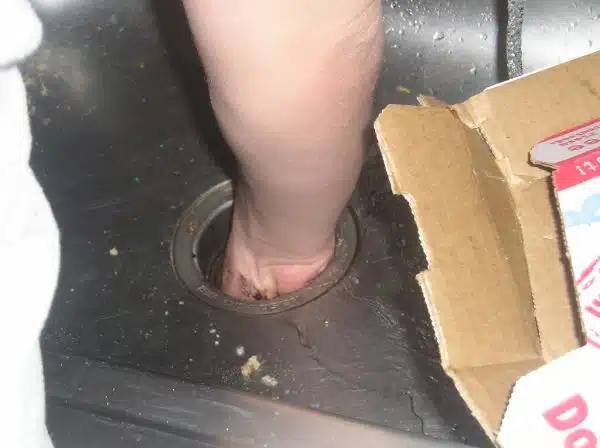
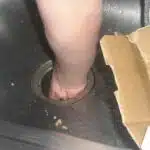
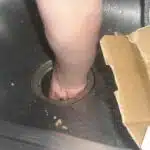
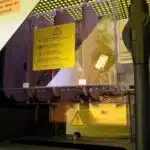

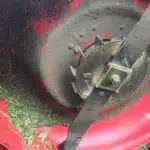
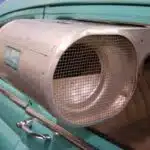

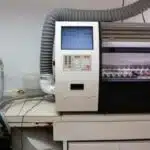
![How To Get Hair Out Of A Bathtub Drain 10 2/365 [Bathtub Drain]](https://green-life.blog/wp-content/uploads/2023/05/cOEu5edpkejq-150x150.jpg.webp)


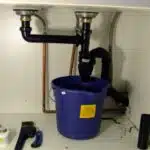



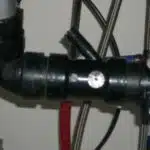
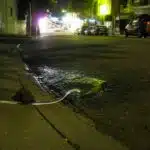
![How To Replace A Bathtub Drain In A Mobile Home 19 2/365 [Bathtub Drain]](https://green-life.blog/wp-content/uploads/2023/05/3ft8KAJsNnjq-150x150.jpg.webp)



